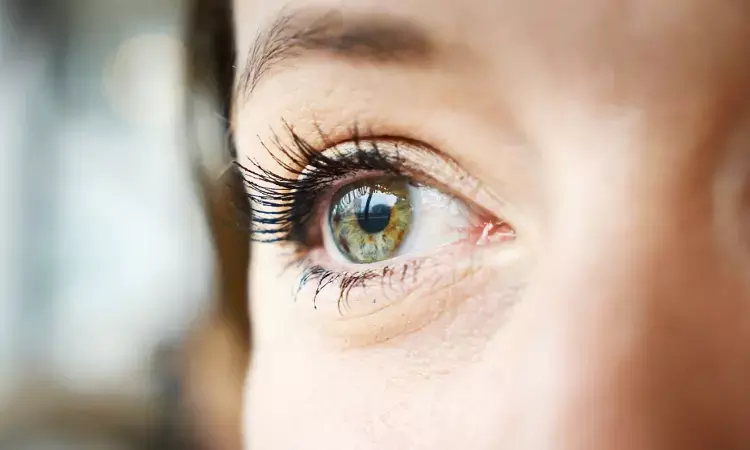- Home
- Medical news & Guidelines
- Anesthesiology
- Cardiology and CTVS
- Critical Care
- Dentistry
- Dermatology
- Diabetes and Endocrinology
- ENT
- Gastroenterology
- Medicine
- Nephrology
- Neurology
- Obstretics-Gynaecology
- Oncology
- Ophthalmology
- Orthopaedics
- Pediatrics-Neonatology
- Psychiatry
- Pulmonology
- Radiology
- Surgery
- Urology
- Laboratory Medicine
- Diet
- Nursing
- Paramedical
- Physiotherapy
- Health news
- Fact Check
- Bone Health Fact Check
- Brain Health Fact Check
- Cancer Related Fact Check
- Child Care Fact Check
- Dental and oral health fact check
- Diabetes and metabolic health fact check
- Diet and Nutrition Fact Check
- Eye and ENT Care Fact Check
- Fitness fact check
- Gut health fact check
- Heart health fact check
- Kidney health fact check
- Medical education fact check
- Men's health fact check
- Respiratory fact check
- Skin and hair care fact check
- Vaccine and Immunization fact check
- Women's health fact check
- AYUSH
- State News
- Andaman and Nicobar Islands
- Andhra Pradesh
- Arunachal Pradesh
- Assam
- Bihar
- Chandigarh
- Chattisgarh
- Dadra and Nagar Haveli
- Daman and Diu
- Delhi
- Goa
- Gujarat
- Haryana
- Himachal Pradesh
- Jammu & Kashmir
- Jharkhand
- Karnataka
- Kerala
- Ladakh
- Lakshadweep
- Madhya Pradesh
- Maharashtra
- Manipur
- Meghalaya
- Mizoram
- Nagaland
- Odisha
- Puducherry
- Punjab
- Rajasthan
- Sikkim
- Tamil Nadu
- Telangana
- Tripura
- Uttar Pradesh
- Uttrakhand
- West Bengal
- Medical Education
- Industry
Myopia onset below 10 years in kids tied to risk of high myopia: Study

Children who have myopia onset below 10 years of age were at risk of developing high myopia of early age reveals a recent study conducted in China.
All children with myopia beginning before the age of ten are at risk for excessive myopia, and children with myopia starting before the age of eight require special attention.
According to studies, myopia is growing more widespread in youngsters. While no clear correlation has been shown, evidence indicates that children who spend more time indoors performing near-focused activities (such as computer work, video games, and reading) have greater rates of myopia than those who spend more time outside.
This study was conducted by Zhuoer Qin and team with the objective to thoroughly evaluate the longitudinal changes in myopia in school-aged children wearing single-vision lenses from onset to stabilization (SVLs).
The findings of this study were published in Acta Ophthalmologica on 3rd October, 2021.
For the following study the medical records of patients who wore SVLs and had long-term follow-up data between 2006 and 2016 were evaluated retrospectively. Patients aged 6–10 years at the time of the initial visit and 16 years at the time of the last evaluation were included and analysed. The phases of development and stability of myopia were determined by drawing fitted curves of spherical equivalent changes (SE).
The key findings of this study are:
Over an average of 7 years (IQR, 6–7 years), 773 patients (median beginning age 9 years) were accessible.
At 16 years old, the mean SE rose from 1.92 1.57 D to 6.05 2.14 D. The average age of myopia stability was 14.6 years, with girls stabilising somewhat sooner than boys.
At 16 years old, 73.7 percent of 6-year-olds and 85.7 percent of 7-year-olds had high myopia, and the risk reduced each year from 7 to 10 years old.
Children with SE higher than 4 D up to 10 years old had an 89.0 percent chance of having high myopia at the age of 16.
Children with SE between 0.5 D and 2 D had a 34% chance of acquiring high myopia at the age of 16.
In conclusion, this study points out the high prevalence of high impact myopia in children with early age onset.
Reference:
Qin Z, Peng T, Zhang Z, Lou J, Wang C, Deng R, Xu M, Yu X, Chen W. Myopia progression and stabilization in school-aged children with single-vision lenses. Acta Ophthalmol. 2021 Oct 3. doi: 10.1111/aos.15038. Epub ahead of print. PMID: 34605206.
Medical Dialogues consists of a team of passionate medical/scientific writers, led by doctors and healthcare researchers. Our team efforts to bring you updated and timely news about the important happenings of the medical and healthcare sector. Our editorial team can be reached at editorial@medicaldialogues.in.
Dr Kamal Kant Kohli-MBBS, DTCD- a chest specialist with more than 30 years of practice and a flair for writing clinical articles, Dr Kamal Kant Kohli joined Medical Dialogues as a Chief Editor of Medical News. Besides writing articles, as an editor, he proofreads and verifies all the medical content published on Medical Dialogues including those coming from journals, studies,medical conferences,guidelines etc. Email: drkohli@medicaldialogues.in. Contact no. 011-43720751


